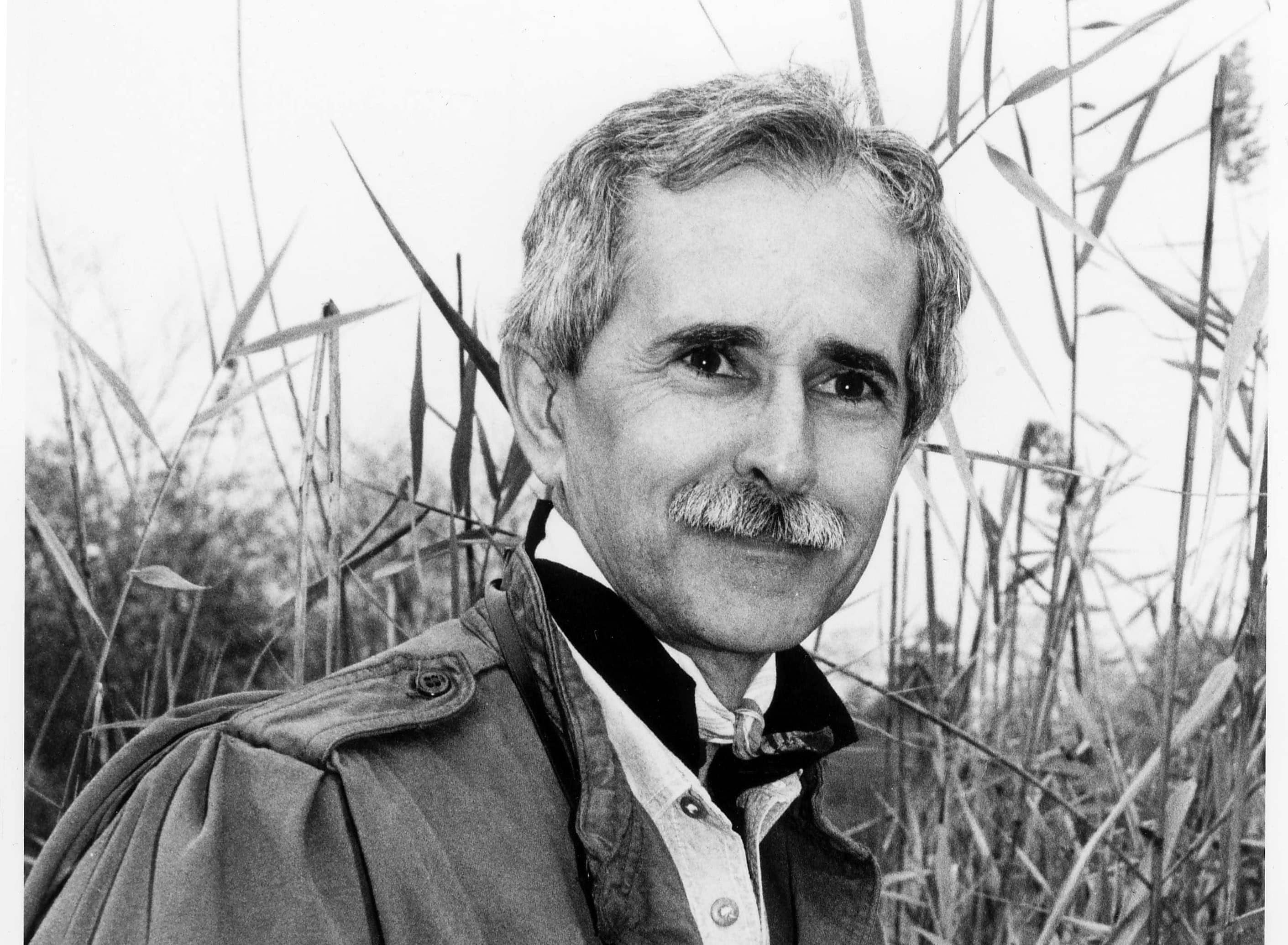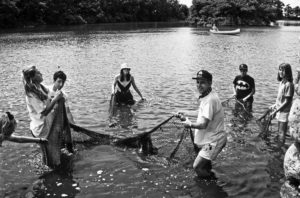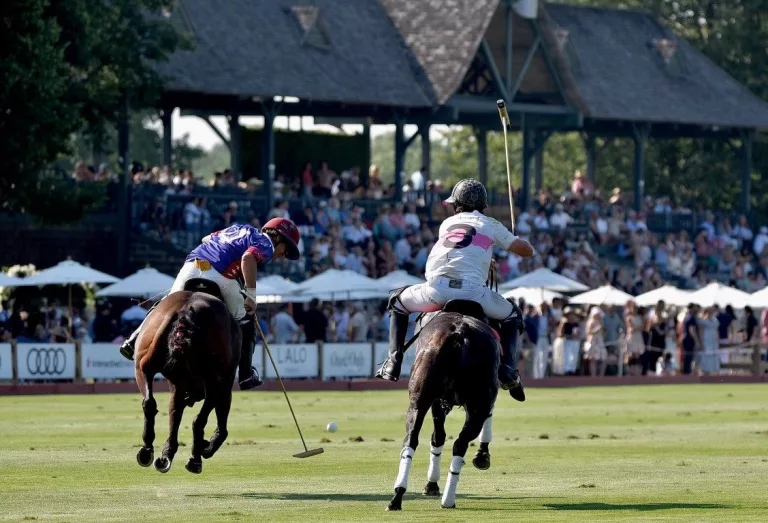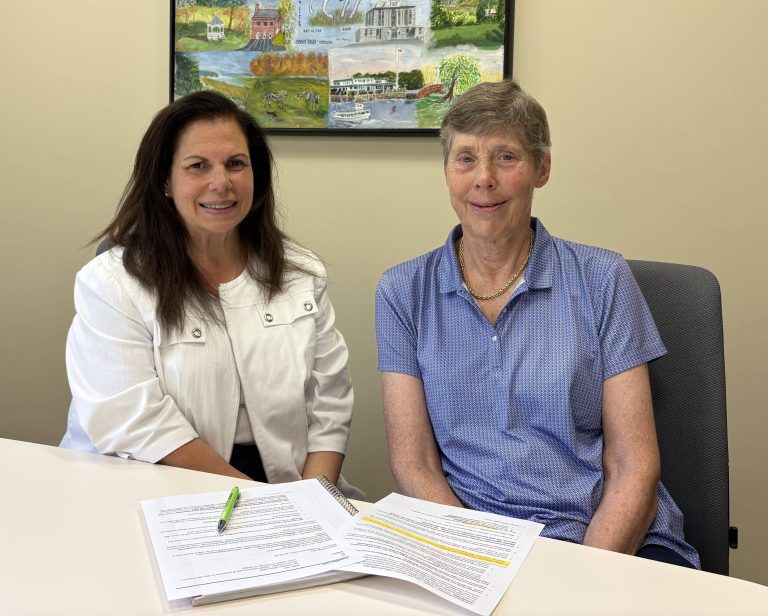
It is hard to put the two words “educator” and conservationist” together in Greenwich and not come up with the name Daniel Barrett. In 2007, Marian Phillips interviewed Barrett for the Oral History Project in order to encapsulate his storied career as a science educator at Greenwich High School (GHS), and as an inveterate conservationist in the town of Greenwich. What emerged was a portrait of a man whose legacy will live on in the minds of the students he taught and in the heart of the community he loved.
Daniel Barrett began teaching in 1958 at GHS, after an interview that involved an unexpected, impromptu lesson to biology students on the third floor of the old GHS, now Town Hall. After his successful on-the-spot class, the immediate consensus was, “Hire him!” and thus began his 38-year career as a science educator. In the 1960s, after Russia launched the satellite Sputnik into space, the U.S. focused on more novel approaches to science education. Mr. Barrett was selected to test one of the new curriculums emphasizing ecology and field studies.

Over the years, Barrett introduced the subject of marine biology to his students. He believed in experiential learning and frequently took his students on field trips. “My whole concept had to do with hands-on, after you would study it from a cerebral point of view.” A favorite trip was to the Fulton Fish Market. “It was a whole experience of knowing about fish, and their requirements in the ocean . . . on how you sell fish and keep it fresh. Then we’d bring it back, and how you prepare fish, and then you’d enjoy it.” It helped that Barrett had two ovens in his classroom!
Barrett had permission to hold two-hour morning classes to allow for field study. “I found I had lots of support to get out in the wild and do things. And that’s what I’ve always felt, hands-on, feeling, smelling, walking in a marsh, smelling the sulfur . . . And that’s where my strength came, was to get students to dig in. And touch it.” After a field study unit on beaches, including their sand structure, as well as their groins, stone walls, and jetties, Barrett marked off the classroom in four-foot squares. Teams of students were required to design and construct their own miniature beach communities utilizing sand, grasses, and building materials, and defend their projects. “So, it was sort of a summary of what we’d been doing all these field trips. I’m sure the custodians loved us…When we were all done, eventually we put everything away, swept up the floor, and brought the furniture in.”

In 1967, Barrett was instrumental in the establishment of the Educational Oceanographic Foundation, Inc. Donors could contribute money and equipment to be used for scientific educational research, speakers, trips, and projects that were not covered in the Board of Education budget. It also provided scholarships to deserving students pursuing marine-related science studies.

Mr. Barrett was appointed to the board of the town’s Conservation Commission, which he first chaired in 1964 and played a role in establishing the town’s Shellfish Commission. “We had all this activity that could take place, in shell fishing. Oysters, clams, and so on. And it was just sitting there…So, we thought we would form a commission, and start looking into the possibility of shellfishing…It took us five-to-eight years of water testing, over and over again, to show that the waters eventually were clean enough that it was safe to open the beds.” Barrett served on the Shellfishing Commission for twenty years.
In 1986, Barrett became involved with Greenwich Land Trust (GLT). Kitty Starr, then GLT president, “was looking for someone who would have an environmental background, and yet would be able to manage these properties, so that from a habitat point of view, they were being protected.” At the time of Barrett’s OHP interview in 2007, properties managed by GLT numbered 119, comprising over 600 acres. They included an island, 18 meadows, open spaces, apple orchards, marshes, woodlots, vernal pools, freshwater ponds, and the plants and animals that inhabited them.

In 2012, the Dan Barrett Stewardship Trust was established to honor his 24 years of service as Executive Director and Environmental Director of GLT, and to provide dedicated funds for the on-going care and management of present and future GLT properties. Shortly before this honor was awarded, Barrett told the reporter covering the event of the importance of cherishing the land for the benefit of future generations. He then quoted Ansel Adams: “Let us leave a splendid legacy for our children. Let us turn to them and say: ‘This you inherit; guard it well, for it is far more precious than money, and once destroyed, nature’s beauty cannot be repurchased at any price.’”
Therein lies the legacy of Daniel V. Barrett, teacher and conservationist.
The transcript of this interview “Distinguished Teacher and Conservationist” may be read at Greenwich Library and is available for purchase at the Oral History Project office. The Oral History Project is sponsored by the Friends of the Greenwich Library. Visit the OHP website at glohistory.org. Mary A. Jacobson serves as blog editor.




